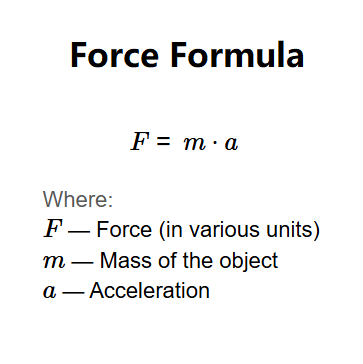
A dynamics calculator is a tool used to analyze and compute various aspects of motion and forces in mechanical systems. To use this calculator, you need to input details such as the mass of the object, the forces acting upon it, the acceleration, and the time duration of the motion. Additionally, some calculators may ask for information on the type of motion (e.g., linear, rotational) and the units of measurement (e.g., meters, seconds, newtons). Based on these inputs, the dynamics calculator will compute key parameters such as velocity, momentum, kinetic energy, and torque. This helps in understanding the behavior of mechanical systems, predicting outcomes of forces and motions, and designing systems that operate efficiently and safely under various conditions.

Dynamics is a branch of physics that deals with the study of forces and their effects on motion. It focuses on understanding how objects move under the influence of various forces, including gravity, friction, and applied forces. Dynamics is essential for analyzing and predicting the behavior of mechanical systems, from simple objects to complex machinery.
For example, dynamics is used to calculate the motion of a car accelerating on a road, the trajectory of a projectile, or the forces acting on a bridge under load.
Dynamic Force refers to the forces that cause or result from motion. Unlike static forces, which act on objects at rest, dynamic forces are associated with acceleration, deceleration, or changes in direction. These forces are critical in analyzing systems where motion is involved, such as vehicles, machinery, or structures subjected to moving loads.
Examples of dynamic forces include the force exerted by a car's engine to accelerate, the drag force acting on an airplane in flight, or the impact force during a collision.
Dynamic force can be calculated using Newton's Second Law of Motion, which relates force, mass, and acceleration. Here are the key formulas:
1. Newton's Second LawThe dynamic force acting on an object is given by:
Where:
If the change in velocity over time is known, the dynamic force can also be calculated as:
Where:
A dynamics calculator allows you to compute one of the following values by providing the others:
Static forces act on objects at rest, while dynamic forces are associated with motion, such as acceleration, deceleration, or changes in direction.
Newton's Second Law states that the force acting on an object is equal to the mass of the object multiplied by its acceleration:
$$ F = m \times a $$To calculate acceleration, rearrange Newton's Second Law:
$$ a = \frac{F}{m} $$Dynamic force is measured in Newtons (N), where 1 N = 1 kg·m/s².